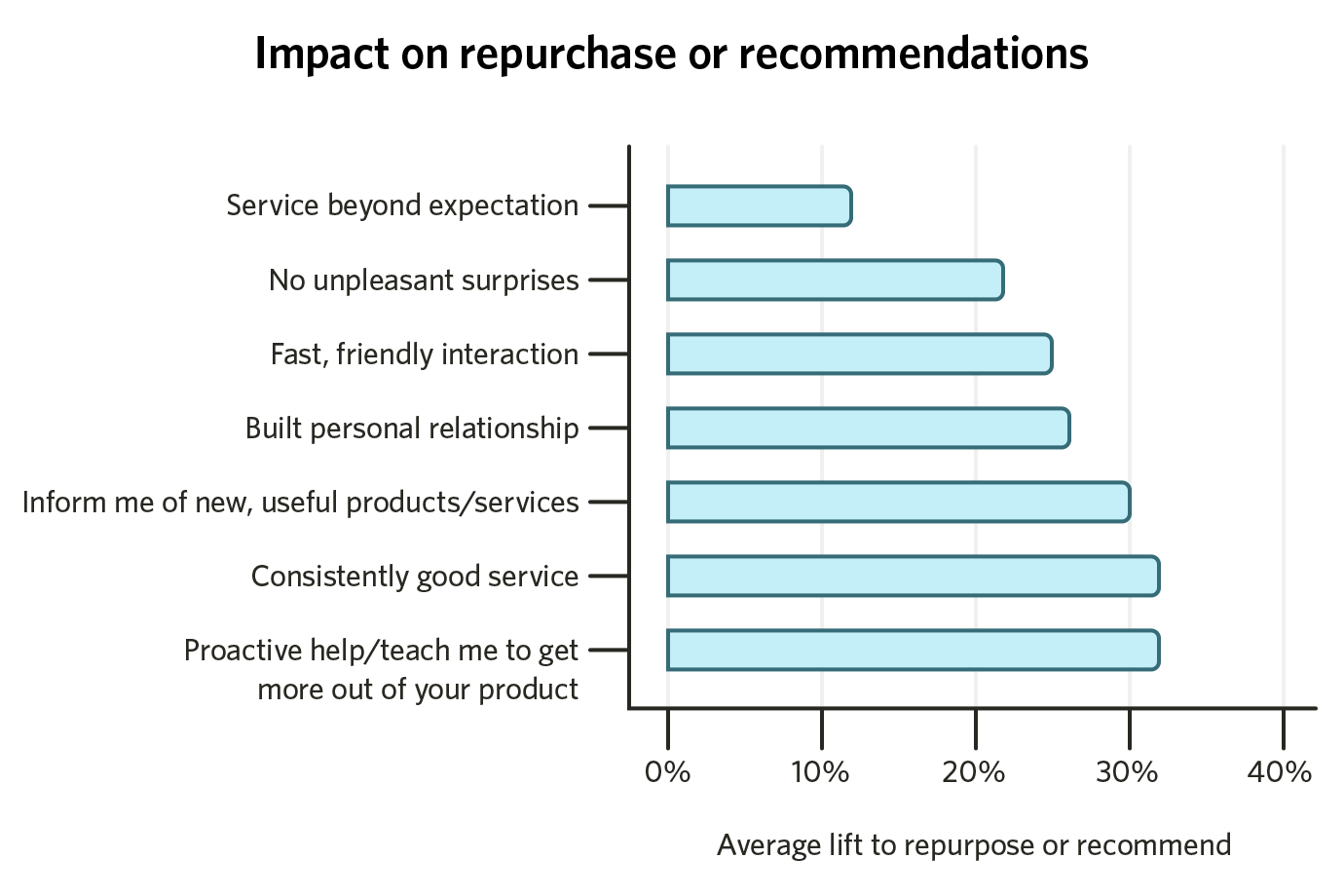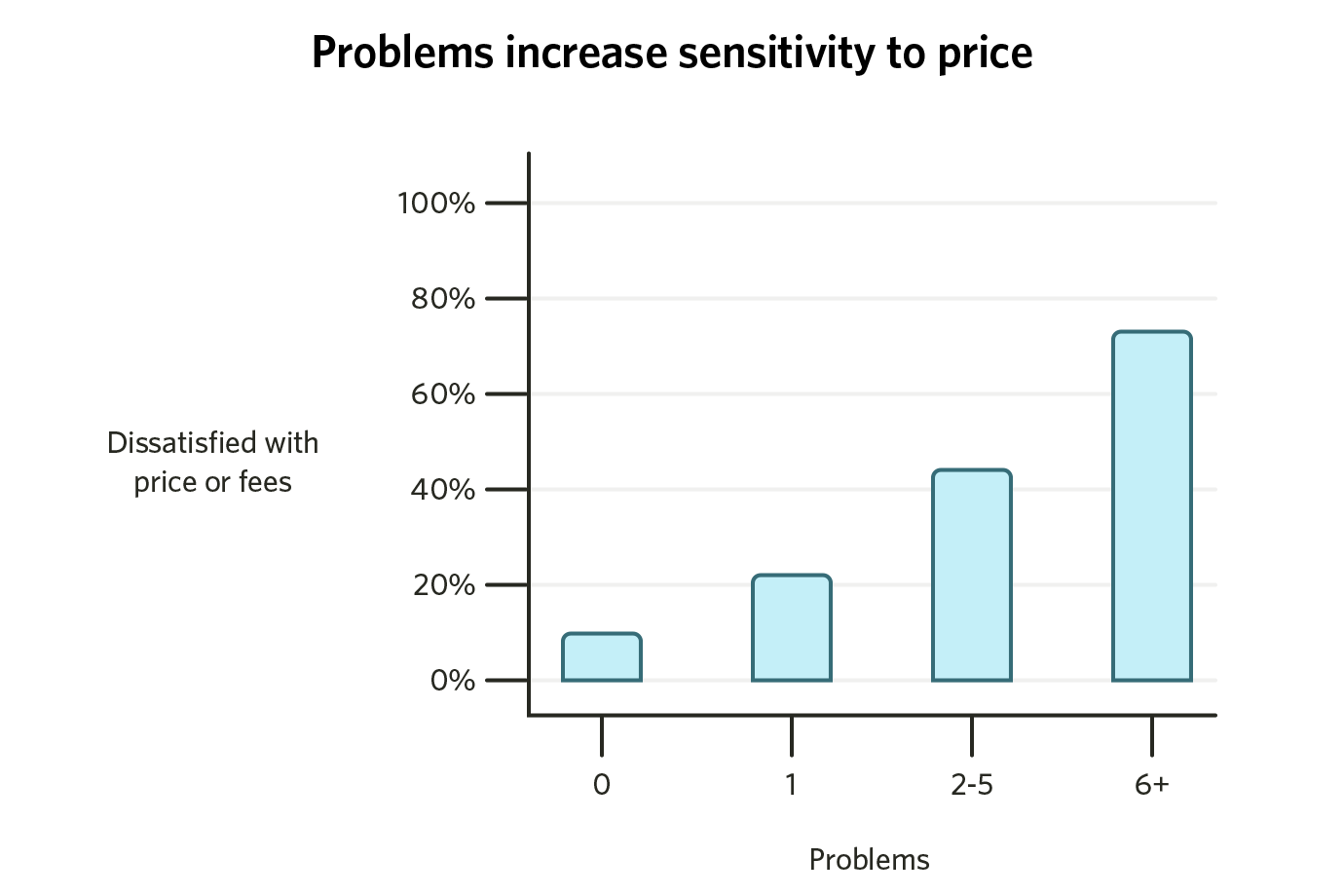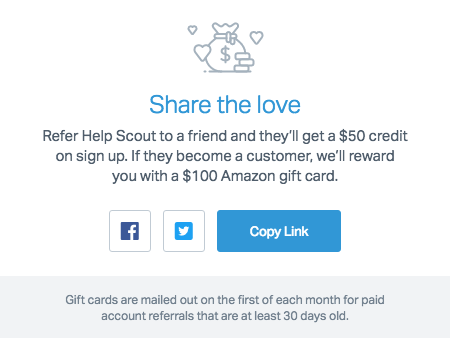22 Customer Retention Strategies that Work
Managing your customer retention rate is an incredibly important part of growing a sustainable business.
Before we look at strategies for improving customer retention, let’s raise a few questions and put a critical data point front and center.
This post was original written for Help Scout. You can find it here: https://www.helpscout.com/blog/customer-retention-strategies-that-work/According to research from Harvard Business School, increasing customer retention rates by 5 percent increases profits by 25 percent to 95 percent. Good to know, but exactly does retention mean?
What is customer retention?
Customer retention rate is how well a company keeps its paying customers over a period of time. Peter Drucker once said the purpose of a business is to make and keep a customer. Retention deals with the latter.
A low retention rate is similar to filling a bucket with holes in the bottom — sure, you could keep piling on to make up for it, or you could figure out what caused the holes and how you can patch them up. Retaining customers costs less than acquiring them, and both add to your company’s bottom line; revenue doesn’t care where it comes from, earned or saved.
How to improve your customer retention rate
At Help Scout, we’re all about building relationships with new customers, but we also believe that great customer service, engagement, and education are more than just the right thing to do — they’re also good for business.
To help you increase your own retention rates, we’ve compiled a list of our 20 favorite techniques, many backed by academic research and case studies on consumer behavior, on increasing customer loyalty.
22 Strategies to Increase Customer Retention
- Stand for something
- Use positive social proof
- Invoke the inner ego
- Position around the before and after
- Use the words they love to hear
- Reduce pain points and friction
- Capture your product’s momentum
- Don’t just sell — educate
- Don’t overspend to delight
- Make use of surprise reciprocity
- Don’t underestimate the power of ‘thank you’
- Make it personal
- Reduce effort before delivering delight
- Accept that speed is secondary to quality
- Know your customers
- Choose the right platform
- Make it a communal effort
- Solve cause and effect
- Give loyal customers a head start
- Make ideal customers VIPs
- Reward your loyal advocates
- Assign your customers positive labels
22 customer retention strategies that work
It’s hard to retain customers if they aren’t even paying attention to you. Below are our favorite bits of research on how clear communication and messaging helps create engagement and loyal customers.
1. Stand for something
Customers are more likely to ignore you if your company doesn’t stand for anything. Research from the Corporate Executive Board that included 7,000 consumers from across the U.S. found that of those consumers who said they had a strong relationship with a brand, 64 percent cited shared values as the primary reason. If you want loyal customers, you need create real connections with them. What do you stand for?
2. Use positive social proof
While negative social proof ("Nearly 90 percent of websites don’t use heat mapping software!") has been proven to dissuade customers rather than encourage them, numerous studies on customer acquisition have shown that positive social proof (like testimonials) are commonly the most effective strategy for getting people to listen and trust your brand.
3. Invoke the inner ego
Most people prefer products and companies that “resemble” them in some way. This cognitive bias is called implicit egotism, and is an important thing to keep in mind when talking to customers. To attract the customers you want, you need to identify your target customers down to the last detail, then craft a message that matches their pains, goals and aspirations. It’s easier to fill this existing demand than to create one.
4. Position around the before and after
“This is your world before our product, and this is your world after.” Providing a contrast for customers can make for powerful marketing, but first you have to understand where they are (how they describe their pain) and where they want to be (how they frame their solution). Speak to that, and show how your product can bridge the gap, and you’ll catch their interest.
Tactics for customer marketing and education
If customers don’t enjoy your education, marketing, and sales process, they’ll likely never do business with you again. Selling to customers the right way is an integral part of creating customer loyalty. Below are a few studies to help you improve the process.
5. Use the words they love to hear
Not all words are created equal. Certain words encourage customers to buy more than others. In particular: free, new and instantly. When customers hear these words, and the promises they imply are backed up, they’ll enjoy their purchases more than they would have otherwise.
6. Reduce pain points and friction
All businesses, no matter the industry, are going to have to sell to the three types of buyers that are out there. According to research from Wharton Business School, nearly a quarter of these buyers will be conservative spenders, or “tightwad” customers. George Loewenstein of Carnegie Mellon University recommends using bundles, reassuring words (e.g., change “a $5 fee” to “a small $5 fee”) and reframing as a better way to sell to conservative buyers.
7. Capture your product’s momentum
When exciting improvements are being made to your product, everyone in the company feels the momentum. But do your customers feel the same way? They won’t unless you take the time to share your work. Today this often falls under the growing list of product marketing responsibilities, but either way it’s the execution that counts.
Create excitement with current customers by showing them what your latest features let them accomplish. As we prepare to introduce major improvements to our Beacon product, for example (such as the addition of live chat), we’ve been running a series of preview posts (like this, and this) to generate excitement about everything customers will be able to accomplish with these new tools.
8. Don’t just sell — educate
According to serial entrepreneur David Skok, sales is often more effective when you have an existing relationship with a customer, and when you’ve already provided value. This matches up with research from TARP Worldwide, which shows customers do enjoy receiving helpful recommendations on new information and products that will help them achieve better results.
The last thing you want to do is leave customers to fend for themselves after they’ve signed up. That’s why we offer ongoing classes and a customer support blog for the customer service community. Anyone using our product can get free ongoing training and be as successful as possible.
Delivering surprise reciprocity and delight
Reciprocity is the social construct that makes the world go ’round and keeps customers coming back. The premise is simple: when “delighting” customers makes sense, it’s best served up as a surprise.
 Source: TARP Worldwide
Source: TARP Worldwide
9. Don’t overspend to delight
Handing out discounts and freebies can be costly. Instead, you should embrace the art of the frugal wow — creating reciprocity through small, thoughtful gestures. In fact, psychologist Norbert Schwarz found that as little as 10 cents can create reciprocity between two individuals (it really is the thought that counts).
One small way we try to consistently brighten our customers’ day is by building what we call “huzzah” images into our product — a fun illustration and caption that appears when you reach inbox zero.
@helpscout I like the encouraging vibes when getting through the tickets! pic.twitter.com/gpEOgdTPCv
— Rosemary Lynch (@rosemary) November 30, 2016
.@helpscout You get me <3 pic.twitter.com/eemgbm2GQ0
— Tamikya Van Der Wel (@Takiah) November 24, 2016
It may seem like a small thing, but if you can make people feel good about using your product, they’ll be more likely to stick around.
10. Make use of surprise reciprocity
Although reciprocity works incredibly well on its own, research shows it’s far more powerful when started by surprise. For a simple example, recall a time that someone did something nice for you unexpectedly — the gesture probably wasn’t all that unusual, but the fact that it came out of nowhere left a strong impression on you.
11. Don’t underestimate the power of ‘thank you’
Companies like Nordstrom, Zappos and Wufoo are known for thanking their customers via handwritten snail mail. They understand that old-school, handwritten thank-you notes are a low-cost, high-impact customer retention strategy.
Thank-you notes are still a rare throwback to old-fashioned, personal customer service — they stand out as a delightful gesture that makes customers feel special and cared for. The relationship-building is well worth the relatively minimal investment.
12. Make it personal
In a study from the Journal of Applied Social Psychology, researchers found that waiters and waitresses could increase their tips by 23 percent by the simple act of returning to tables with a second set of mints. The researchers concluded that the mints created the feeling of a personalized experience for the customers who received them. So, it was the personalized service that made their day, not the small gift in itself.
13. Reduce effort before delivering delight
Many companies assume “exceptional” customer service can only be achieved by going above-and-beyond; that loyalty is built on showy gestures. According to research from Dixon, Toman, and DeLisi published in The Effortless Experience, the true driver of customer retention and loyalty is the ease of getting a problem solved — delight isn’t the foundation of a customer service strategy, but rather a second-order effect. First, focus on consistently meeting expectations and avoiding unpleasant surprises. Then go the extra mile.
How great service retains customers
You can’t build customer loyalty without an exceptional customer service to keep people coming back. Let’s debunk a few customer service myths, as well as tackle some important things you need to keep in mind when offering support online.
14. Accept that speed is secondary to quality
When it comes to highly rated customer service, data show that quality and completeness matter more than speed. According to research from the Gallup Group, customers were nine times more likely to be engaged with a brand when they evaluated the service as “courteous, willing, and helpful,” versus the “speedy” evaluation, which only made customers six times more likely to be satisfied.
15. Know your customers
Telling your team to spend more time with customers might seem like folly, but smart entrepreneurs know that isn’t the case. Numerous behavioral psychology studies have shown that everybody views their service experience as more positive when they don’t feel rushed or ignored. Don’t spend time idly, though; have employees attempt to find out key customer traits, just like Derek Sivers did at CDBaby.
16. Choose the right platform
The best way to improve your customer service efforts is to utilize the channel your customers most prefer. Research has shown the death of email support has been greatly exaggerated. However, you need to pick the channel that makes the most sense for your business. Hosting companies, for example, know that live chats are critical when their customers’ sites go down; other companies may have customers who prefer using self-service, or even phone support.
17. Make it a communal effort
Countless case studies have made one thing clear when it comes to creating an efficient support system: You need to keep everybody in the loop. At Help Scout, we use our integration with Slack to access real-time notifications of what’s happening on the customer end; we were able to improve our response time by 340% (not a typo!) by creating a support channel for all of our teammates.
18. Solve cause and effect
It isn’t enough for your customer service team to apologize; their main goal should be to solve for the immediate problem, but to also find and flag the root cause. In doing so, they can solve a systemic issue and help other customers avoid it altogether. Reducing problems is key — in fact, research conducted by John Goodman found that customers were much more sensitive to price changes, and thus more likely to churn, when they experienced a few problems with the product or the support they received.
 Source: Strategic Customer Service
Source: Strategic Customer Service
Designing sticky retention programs
The key to creating loyalty programs that work is to know why customers use them and what gets customers to keep using them. Below you’ll find consumer research that answers these questions.
19. Give loyal customers a head start
Consumer researchers Joseph Nunes and Xavier Dreze are known for their studies on the Endowed Progress Effect. Their results have conclusively shown that the biggest pitfall in preventing customer loyalty programs from succeeding is getting people started. In their well-known car wash study, participants were twice as likely to finish loyalty cards when they were automatically started (or rewarded) as soon as they signed up.
20. Make ideal customers VIPs
Additional research by Dr. Nunes on retention programs has shown that people love being VIP, or “gold” members. There is one caveat, though — this only works when people know there is a class below them on the totem pole. Speaking to human nature, Nunes saw a notable increase in gold members’ participation as soon as he implemented a silver class.
21. Reward your loyal advocates
When your customers go out of their way to recommend your product or service to others, let them know that you see and appreciate it! If you spot someone recommending your business on social media, for example, reply to say thanks — it shows you’re paying attention, and that their testimony means something to you.
Another way to recognize your brand advocates is with a referral program — Help Scout is currently giving existing customers a $100 Amazon gift card when they refer someone who becomes a customer (and that new customer gets a $50 credit on their account).

22. Assign your customers positive labels
Research on voting patterns conducted by Stanford University revealed people are more likely to participate in something if they are labeled with a positive trait. Buffer refer to their premium customers as “awesome” members, and even named their upgraded payment plan the Awesome Plan — a much easier phrase to embrace than “paid member.”
Retaining customers is a balancing act
There are many tactics, but no shortcuts; you can’t “hack” a personal relationship, so why should we assume business relationships are any different? Truth is, the tactics above should hopefully give you some fresh ideas for approaching retention, but they’re not a cure-all.
Your product and service will do most of the heavy lifting in keeping customers loyal, and there are no shortcuts for that.